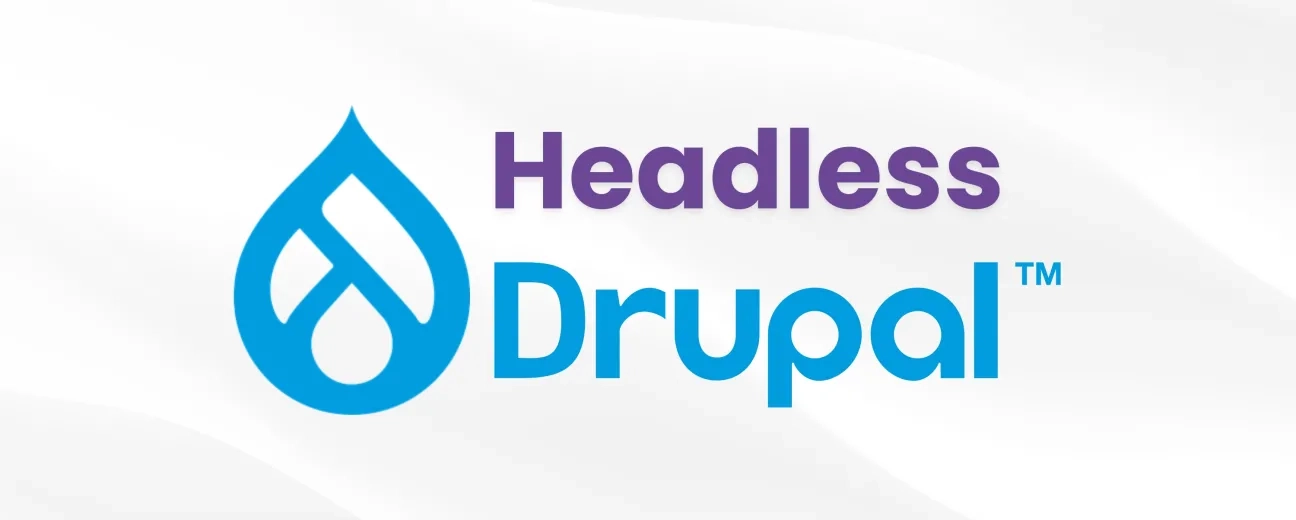
We’re excited to hear your project.
Let’s collaborate!

Traditional Drupal websites use Drupal as the end-to-end solution for creating, storing, and displaying content to the end-user. Modern approaches leverage headless Drupal, where building and storing happen on Drupal, but displaying is not.
Headless Drupal approaches make Drupal the backend content repository and build the frontend in different technologies that communicate with Drupal through an API.
Today, many companies opt for using headless Drupal solutions, and the reasons are not few. If you don't want to sacrifice the user experience but still enjoy the powerful tools provided by Drupal, a headless approach might be the best fit.
Decoupled Drupal is known for its several benefits such as:
In the hectic digital landscape, your marketing team knows that communicating with your customers on multiple channels is critical. The way companies use content management systems today has to do with their need to push content on various channels, thus increasing their digital presence.
If used properly, headless Drupal can be a source of content for various consumers. It provides content on the frontend site and serves content via API to be consumed on mobile devices, applications, or IoT. This gives great flexibility for headless Drupal users.
Bringing together Drupal with a frontend Javascript framework is a smart strategy for making the most out of Drupal's capabilities for content creation and data storage while at the same time create easy to use, fast frontend applications.
If you're thinking of choosing a headless Drupal approach for your next web development project, combining these two solutions will offer greater functionality—why not enjoy the power of Drupal's modules and the intuitiveness of a Javascript frontend application at the same time?
You can really have the best of both worlds!
This means you get to be more dynamic in managing frontend technologies without the need to re-architect large Drupal backends. From a developer's point of view, this is a real blessing.
Many businesses redesign their websites every few years, and separating the frontend from the backend makes it much easier to rebuild. This saves a lot of resources and reduces the expenses associated with rebuilding Drupal websites.
One of the reasons Drupal is often chosen for a headless project is because this CMS has most of the required functionality and API modules. As the Drupal community is committed to continuously make Drupal a reliable API-driven CMS, Drupal is known for efficiently serving and receiving content via APIs.
If you need to create multiple separate websites, a headless approach is the right way to do it. It's a lot easier to build one content engine such as Drupal and use it to deliver content to all microsites. As a result, you'll have all your content in one content hub, and you'll be able to create and close microsites when needed quickly.
Before deciding to opt for headless Drupal development, you might want to consider these aspects:
Keep in mind that headless development can be complicated and complex, and you might need a professional developer or Drupal agency, like Optasy, to help you on the way.
You're likely to spend more resources with a headless approach as you now build two systems. The development process will take longer, and therefore the expenses associated with it will be higher.
Since headless Drupal requires two separate components, that means that you'll often have to manage two teams (backend and frontend). At this point, you want to ensure that you enable great collaboration and coordination between your teams as data models have to be agreed upon.
As decoupled systems rely only on REST API, maintaining these systems to function properly requires intense testing. Compatibility issues when editing and making changes can arise between the two systems. What is more, security updates are required more often as there will be a need to patch more than one system.
Furthermore, leveraging headless Drupal can enhance your website's accessibility, making it easier to comply with standards such as AODA, as highlighted in our article on Achieving Accessibility and AODA Compliance with Drupal Development.
If you're still torn between traditional Drupal projects and going for a headless approach, seeking advice from Drupal experts might be needed. At Optasy, we offer expert guidance based on your business needs so that you can get the most out of your next web development project.
Photo credit: Nubleson Fernandes on Unsplash.

We’re excited to hear your project.
Let’s collaborate!